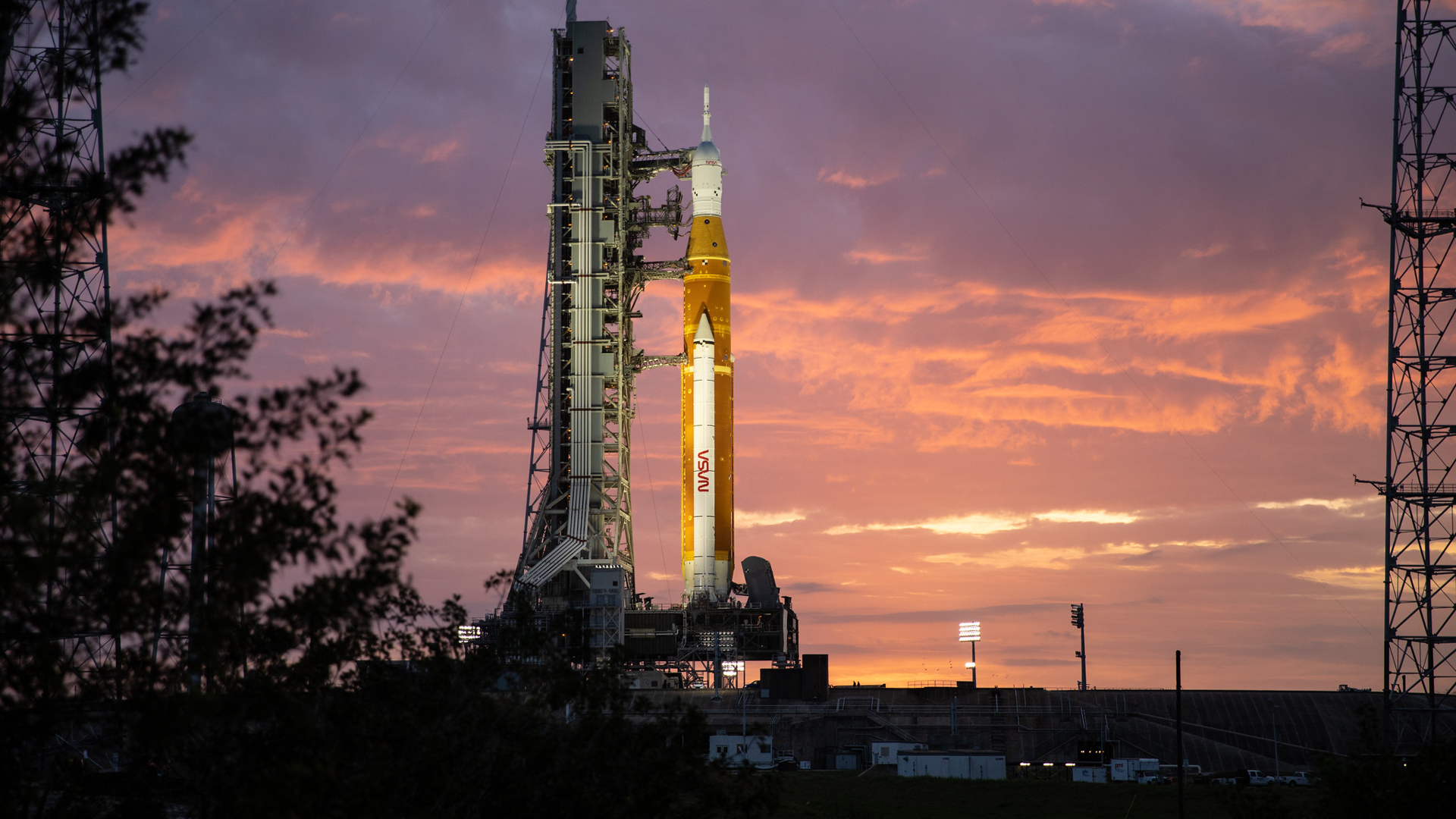
NASA has decided to roll its Artemis 1 moon rocket off the launch pad and back to a processing facility to fix some issues revealed by a recent "wet dress rehearsal" test.
The wet dress rehearsal — a series of key trials designed to show that Artemis 1's huge Space Launch System (SLS) rocket, Orion spacecraft and their associated ground infrastructure are ready to go — began on April 1 at Pad 39B at NASA's Kennedy Space Center (KSC) in Florida.
Things were supposed to wrap up about 48 hours later, with the loading of liquid hydrogen and liquid oxygen propellants into the SLS and the execution of several simulated launch countdowns. Artemis 1 team members ran into several problems that delayed those steps, however, and they ultimately stood down to accommodate the private Ax-1 astronaut mission, which launched atop a SpaceX Falcon 9 rocket on April 8 from KSC's Pad 39A.
Live updates: NASA's Artemis 1 moon mission
Related: NASA's Artemis 1 moon mission explained in photos
The wet dress got going again on April 12, in a modified format: After discovering a faulty valve on the mobile launch lower supporting the Artemis 1 stack, the team decided to fuel up just the SLS core stage, not its upper stage as well.
Technicians began fueling the core stage on April 14 as planned, but they stopped after noticing that liquid hydrogen was leaking from one of the "umbilical" lines running from the mobile launch tower to the SLS.
After ending that fueling effort — the third of the wet dress campaign following abortive tries on April 3 and April 4 — Artemis 1 team members took some time to analyze their data and their options. They initially left the door open to resuming the wet dress next week, with another tanking try perhaps as early as Thursday (April 21).
Get the Space.com Newsletter
Breaking space news, the latest updates on rocket launches, skywatching events and more!
But that's not on the table anymore. The team has decided to roll the Artemis 1 stack off Pad 39B and back to KSC's cavernous Vehicle Assembly Building to replace the faulty valve and address the leaky umbilical.
"During that time, the agency also will review schedules and options to demonstrate propellant loading operations ahead of launch," NASA officials wrote in an update on Saturday (April 16).
The decision, or at least the timing of it, was driven to some degree by external factors, NASA officials said, citing upgrades needed "at an off-site supplier of gaseous nitrogen used for the test."
We'll learn more about the decision and the plans going forward soon; NASA will hold an Artemis 1 press conference Monday (April 18) at 3 p.m. EDT (1700 GMT). You can follow it live at Space.com.
Artemis 1 will send an uncrewed Orion on a roughly month-long journey around the moon. NASA is hoping to launch the mission this summer but won't set an official target date until the wet dress wraps up and teams have analyzed the resulting data.
Mike Wall is the author of "Out There" (Grand Central Publishing, 2018; illustrated by Karl Tate), a book about the search for alien life. Follow him on Twitter @michaeldwall. Follow us on Twitter @Spacedotcom or on Facebook.
Join our Space Forums to keep talking space on the latest missions, night sky and more! And if you have a news tip, correction or comment, let us know at: community@space.com.

Michael Wall is a Senior Space Writer with Space.com and joined the team in 2010. He primarily covers exoplanets, spaceflight and military space, but has been known to dabble in the space art beat. His book about the search for alien life, "Out There," was published on Nov. 13, 2018. Before becoming a science writer, Michael worked as a herpetologist and wildlife biologist. He has a Ph.D. in evolutionary biology from the University of Sydney, Australia, a bachelor's degree from the University of Arizona, and a graduate certificate in science writing from the University of California, Santa Cruz. To find out what his latest project is, you can follow Michael on Twitter.
